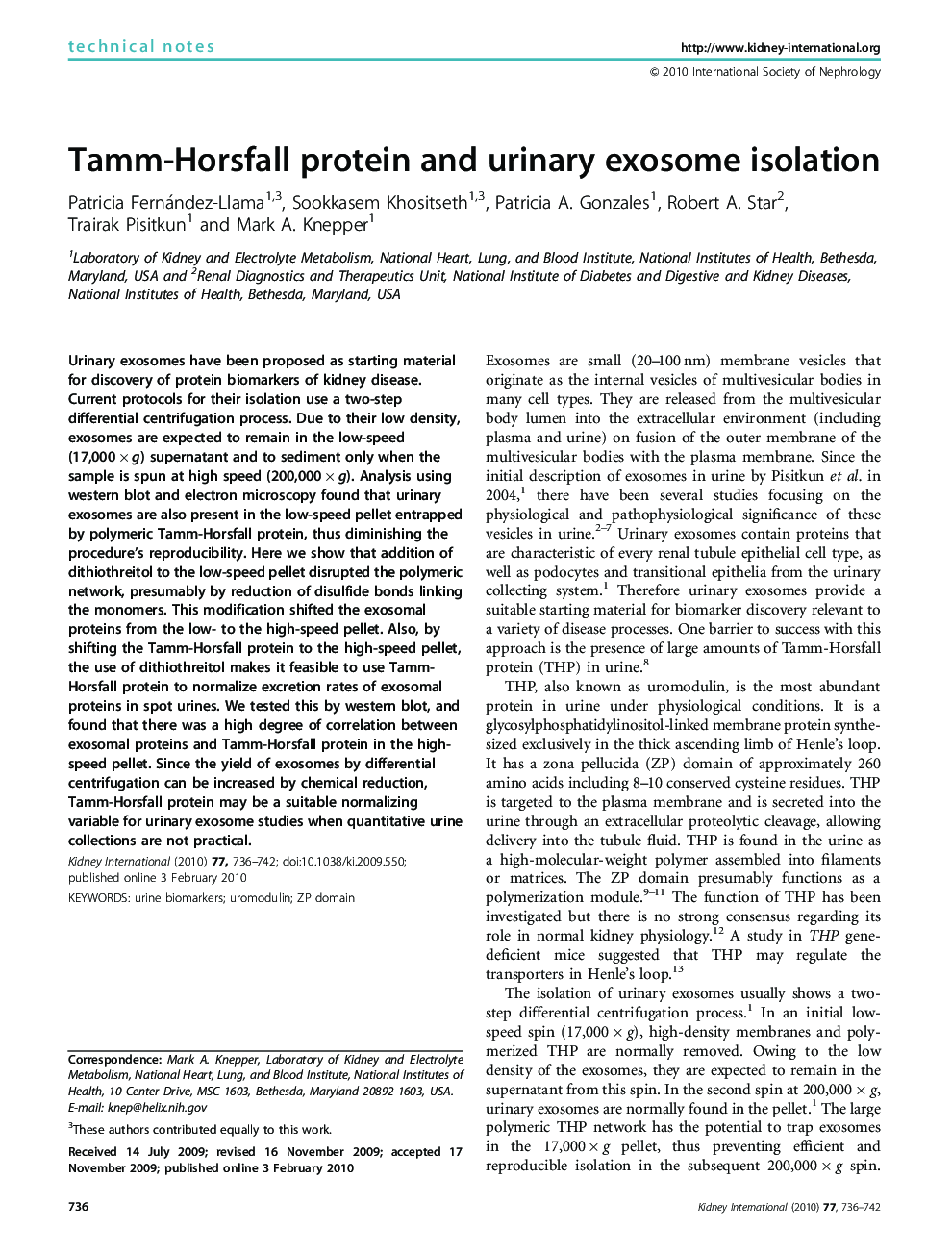| Article ID | Journal | Published Year | Pages | File Type |
|---|---|---|---|---|
| 3884008 | Kidney International | 2010 | 7 Pages |
Urinary exosomes have been proposed as starting material for discovery of protein biomarkers of kidney disease. Current protocols for their isolation use a two-step differential centrifugation process. Due to their low density, exosomes are expected to remain in the low-speed (17,000 × g) supernatant and to sediment only when the sample is spun at high speed (200,000 × g). Analysis using western blot and electron microscopy found that urinary exosomes are also present in the low-speed pellet entrapped by polymeric Tamm-Horsfall protein, thus diminishing the procedure's reproducibility. Here we show that addition of dithiothreitol to the low-speed pellet disrupted the polymeric network, presumably by reduction of disulfide bonds linking the monomers. This modification shifted the exosomal proteins from the low- to the high-speed pellet. Also, by shifting the Tamm-Horsfall protein to the high-speed pellet, the use of dithiothreitol makes it feasible to use Tamm-Horsfall protein to normalize excretion rates of exosomal proteins in spot urines. We tested this by western blot, and found that there was a high degree of correlation between exosomal proteins and Tamm-Horsfall protein in the high-speed pellet. Since the yield of exosomes by differential centrifugation can be increased by chemical reduction, Tamm-Horsfall protein may be a suitable normalizing variable for urinary exosome studies when quantitative urine collections are not practical.
